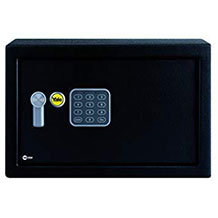Ergonomic office chair purchasing advice: how to choose the right product
- What you need to know
- Ergonomic office chairs help you achieve a healthy sitting position and thus prevent back problems.
- Adjustable parts such as the backrest, seat or headrest help to find the ideal and most comfortable sitting position.
- Different versions range from swivel chairs and models for gaming, to special designs for people with back problems.
- Mechanisms built into the chair facilitate movement during work and prevent overly static sitting for long periods of time.
Not only for the office
It is not only since 2020 that many people spend their working hours in their own homes. More and more people are moving their workplace into their homes. This brings a lot of advantages. However, people often work at home at the kitchen table or on the sofa. Ergonomics are neglected in the process. Just as in the office, the following applies: if you want to stay healthy in the long term when working at a computer, you need a well-furnished workplace. An important detail is the seating. There is no way around a suitable office chair.
Sitting at a desk or in front of a computer for long periods might lead to problems with a number of body parts. The wrong posture or unsuitable furniture can be particularly conducive to this. Since we spend a large part of our day sitting anyway, we must actively prevent muscular or circulatory diseases. This can be achieved with sufficient exercise, also during working hours, and with an ergonomic office chair. According to a study by the German Sport University Cologne, people with office jobs spend an average of eleven hours a day sitting. People who earn their money with streaming or e-sports spend up to twelve hours a day just sitting at the computer. Therefore, the range of special gaming chairs has been growing for several years.
Why an an ergonomic office chair?
Ergonomic chair models are individually adjustable at various points to ensure greater sitting comfort and prevent physical ailments. Adjustable seat, backrest and armrest help the user to adopt a healthy position. The castors on the feet of the chairs are made of different materials, each suitable for a different surface. The cover of the seat and backrest surfaces also satisfy different requirements. If you sit in the chair for eight hours a day, you should choose a more robust material than someone who sits in it only sporadically or for shorter periods of time.
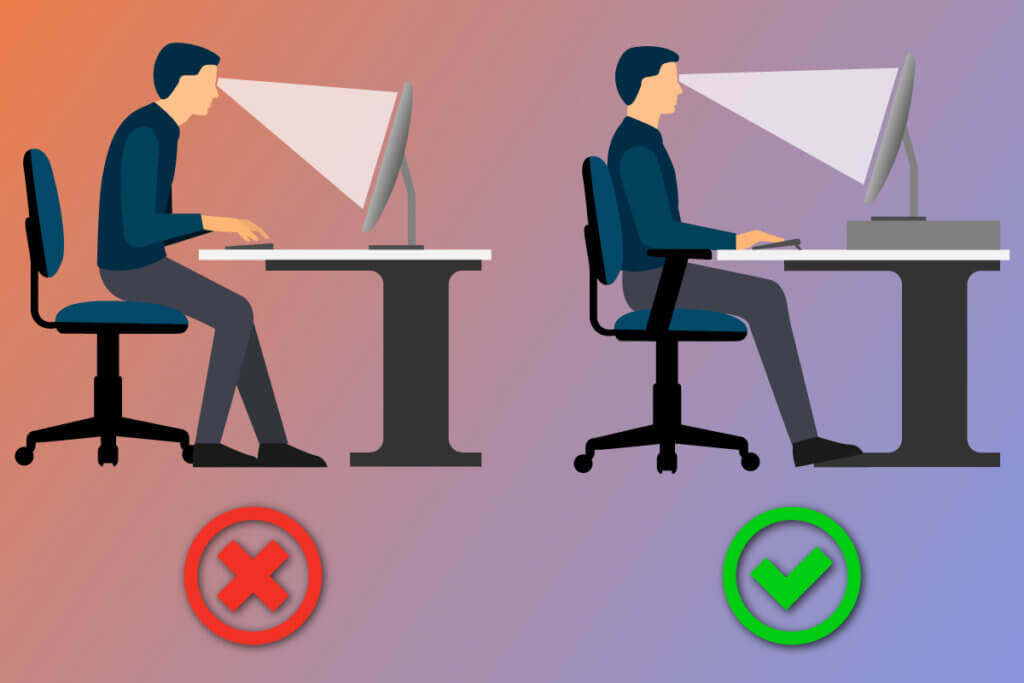
Preventing back problems with flexibility
People who suffer from back problems or who want to prevent them need to take a lot of care when it comes to choosing a chair. A flexible seat, for example, strengthens the back muscles, and people with intervertebral disc problems can use swivel chairs that have a special seat. An ergonomic design prevents poor posture and avoids sitting incorrectly. An optimal sitting position reduces fatigue and tension which increases the ability to concentrate. The reduced strain makes it easier to work, which ultimately results in a higher working speed.
If you go for back-friendly work equipment, unpleasant complaints are prevented and existing ailments can also be alleviated. A chair that is correctly adjusted helps to correct incorrect back posture. But be careful: this also means that the wrong office chair and a wrong sitting posture have the opposite effect. If your backrest is set at the wrong angle, back pain can quickly develop. Generally speaking, however, gentle sitting alone doesn’t keep you healthy. Experts recommend getting up and moving around the workplace as often as possible.
Important adjustability features
The first thing to consider when buying: the more parts that are adjustable, the more likely you can achieve optimal comfort. Most office chairs have a lot of individual parts that can be moved:. These include: backrests, seats, armrests and lumbar supports. Almost all components can be adjusted in height, length or inclination so that people of different heights can sit comfortably and ergonomically on the office chair. If you sit up straight and notice that your arms are out of place or that something is pressing uncomfortably on your back, you have not adjusted your seat properly.
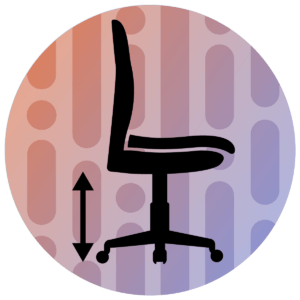
Seat height
For people between 4 feet 11 inches and 6 feet 2 inches (1.50m and 1.90m) tall, a seat height of between 18.5 and 23.6 inches (47cm and 60cm) is recommended. If you are taller, you should make sure that the seat can be adjusted to a height of 26.8 inches (68cm). A gas spring in the chair leg provides the height adjustment. In an upright sitting position, you must be able to place both soles of the feet on the floor while at the same time your lower and upper thighs each form an angle of slightly more than 90 degrees. Your thigh should slope slightly towards your knee. Your forearms must be able to be placed comfortably on their rests, while they are also at a right angle to the upper arms. Once the perfect sitting position has been found, the height should still have a little wiggle room in both directions.

Seating surface
Suspension in the chair is recommended. It makes it easier to stand up and it cushions your body weight when sitting down. Some modern models have a seat that can also be moved to the sides, which benefits our back muscles. Experts refer to this as dynamic sitting because the body always remains in motion. This can be rocking, bouncing or slight swaying—in any case, it ensures that the body never remains completely motionless. Even the best sitting position is of no use if the user remains rigidly in it. Recommendation: when your back is pressed firmly against the backrest with the seat upright, there should ideally still be a couple of inches (5cm) of space between the edge of the seat and the back of the knee. The seat depth should be adjustable by up to 4 inches (10cm). The seat shouldn’t be higher towards the back, as this would cause your body to slide forward.

Armrests
There are various options for modifying the armrests. To prevent pain and incorrect posture, the shoulders should be relieved. Ideally, the upper and lower arms should form a right angle, but at the same time they should neither spread too far from the body nor be too tight. Therefore, the armrests must be adjustable not only in height but also to the sides. The length should roughly correspond to the length of the forearm. If the armrests are too long, it is no longer possible to roll close to the desk. Some models have so-called 4D armrests that can be adjusted not only in height, length and width, but also radially in all directions. Last but not least, it is important to ensure that they are stable, as they often serve as a stand-up aid.
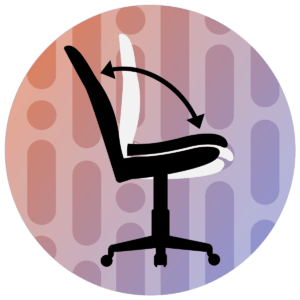
Backrest
In general, it is recommended to look for a rather wide backrest that reaches up to your shoulder blades. If it becomes narrower towards the top and is slightly rounded backwards at the upper end, you can stretch and lean backwards without being disturbed by part of the backrest. A synchronous mechanism in the backrest allows the owner to recline comfortably, which is necessary even on the most stressful days. The mechanism adjusts the position ergonomically, which is not only comfortable but also promotes blood circulation. If a headrest is available, it should also be adjustable; in height as well as forwards and backwards. This allows the head to rest comfortably. Some people find a neck support comfortable too.
What is lumbar support?
The lumbar support is located on the lower part of the backrest and can be adjusted either together with the backrest or separately. It supports the spine, which is slightly curved in the lower part of the body. It is important that it is individually adjustable because the lumbar vertebrae also sit higher up or lower down, depending on body size. A correct position ensures a comfortable seat in an upright position and relaxes the back muscles. The backrest thus adapts to the shape of a healthy spine and holds it in place. Lumbar support works best when it is adjusted on the lower iliac crest, approximately at the level of the belt. If the lumbar support exerts a slightly noticeable pressure without being uncomfortable, it provides good support for your spine.
A chair for every occasion
Comfortable and ergonomic office and desk chairs come in a variety of designs. The classic swivel chair is the smallest of these. It is covered with fabric and sometimes fully upholstered. A special mesh fabric is suitable for more comfortable work in summer because the heat can escape better. A fully upholstered chair, on the other hand, is much softer and warmer.
So-called executive chairs are covered with leather or imitation leather and have a much larger and wider backrest. Due to their expansive dimensions, they are more suitable for spacious individual offices or working at home. The special gaming chairs made of imitation leather usually have a racing look, which gives them a modern and dynamic appearance. They are optimised for long periods of sitting and are therefore perfect for gamers and streamers, but also for working from home. Manufacturers such as DXRacer, Recaro or GT Player have specialised in these products.
There are also special swivel chairs for children. These are much smaller, but should be equipped with the same adjustment options as chairs for adults. Even though children generally spend less time on them than people with office and desk jobs, it is important that parents pay the same attention to ergonomic requirements here. This ensures that the little ones grow up with a healthy posture right away and that maladjustments don’t form early on. A correct sitting posture for children has the same characteristics as for adults. However, parents should make sure that the seat height and backrest can be adjusted within a wide range so that the chair “grows” with the child. It would be annoying if a lot of money is invested in an ergonomic chair and the child outgrows it in a couple of months.
Support and movement through the right mechanism
The synchronous mechanism is a concept in which first the backrest and then, with some delay, the seat surface move when the user leans back. The aim is that the body doesn’t remain permanently forced into a 90-degree posture, but is stretched and the blood circulation is stimulated. The vertebrae in the lower part of your spine need this support to prevent bad posture. The two elements of the office chair adapt to the movement of your body without it slipping off the seat. Since this also keeps your feet on the floor, it prevents your hips from shifting. The synchronous mechanism is the most common mechanism used in desk chairs, although many manufacturers use their own name for it.
A permanent mechanism where the backrest moves but the seat remains rigid, is hardly ever used today. This is the best way to adopt a reclined sitting posture. By alternating between an upright and a more relaxed sitting posture, the intervertebral discs are better supplied with nutrients.
With the rocking mechanism, which is usually operated by a lever, the backrest is also tilted backwards. The angle between the seat and the backrest doesn’t change. Whether this mechanism is beneficial to health is controversial. The spine is not designed to remain in the same position and the intervertebral discs also need regular movement. The fact is that the lumbar vertebrae remain in contact with the lumbar support during the rocking function. The feet, however, lose firm contact with the floor as the seat surface tilts slightly upwards.
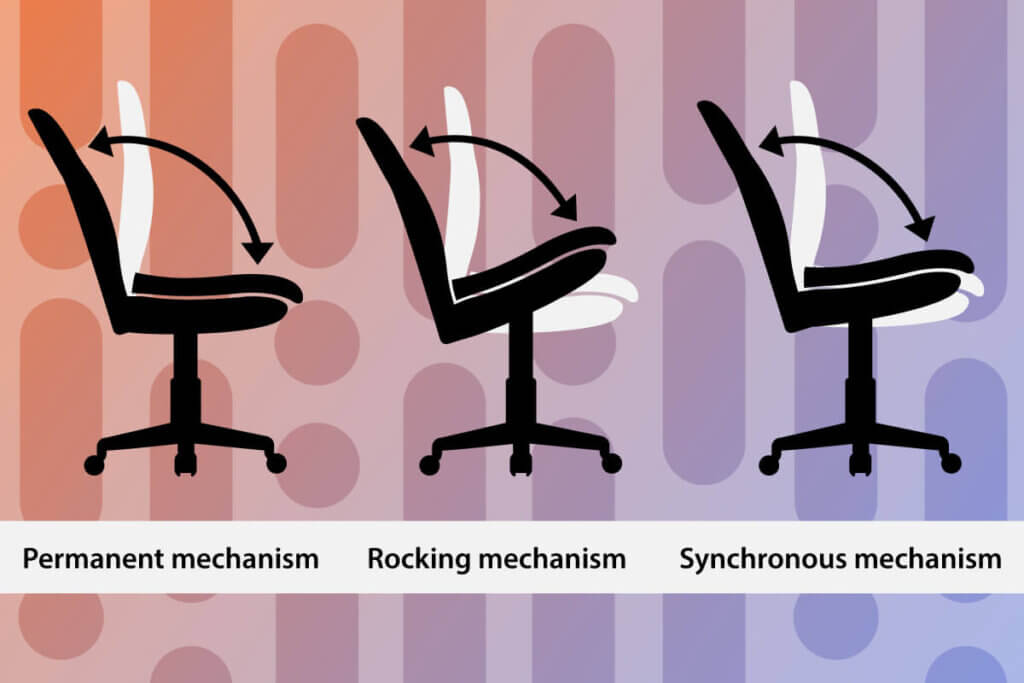
The sensitivity of the mechanism should in all cases be adjusted to the weight of the users. The less they feel the change of position, the better. If the users fall backwards when they only want to lean back, the mechanism is set too loosely. If too much force has to be applied, it is too rigid. There is no one perfect mechanism; the bottom line is that you should aim to get into a comfortable sitting position and still be able to work in an upright seat.
Dynamic sitting doesn’t refer to the mechanics of how the backrest or seat can be adjusted, but it is a very innovative concept in terms of ergonomics in office chairs. Manufacturers such as TrendGo Swooper or Haider Bioswing have installed a ball joint in the base of their models. This creates a seating system that reacts to small movements of the users. Users, in turn, control it actively or unconsciously. In this way, the chair prevents the users from remaining too rigid. The mechanism is installed in office chairs and executive chairs, but also in stools and standing seats.
The right wheels for different floors
There are harder and softer wheels for different types of floors. As a rule, they can also be distinguished by color. On soft carpeted floors, hard, black castors can be used without hesitation. Softer versions are suitable for hard surfaces such as wood or laminate. They have a light rubber coating and are gentle on the floor. The harder plastic castors could leave scratch marks. If you want to be absolutely sure, you also have the option of getting a special, transparent protective mat. Some manufacturers also promise universal castors that are suitable for any surface, for example Ikea‘s models.
The base of office chairs is usually made of plastic, aluminium or metal. Experts recommend five wheels, as this ensures the highest stability and there is no danger of losing balance. The chair must be able to withstand a lot of stress and be stable and reliable even after years of use. When it comes to plastic processing, it is worth taking a closer look, because some manufacturers unfortunately still don’t really pay attention to avoiding harmful substances. This is another reason why a product test is important, as parts containing harmful substances can cause the item to fail.
What should an ergonomic office chair cost?
There are certainly models between $100 and $300 that fulfil their function well. Inexpensive chairs can be absolutely sufficient for sporadic use. Depending on the area of application or the length of time spent sitting, it is important to consider whether it might not be worth digging deeper into your pockets in the long run. Anyone who spends a third of the day on a desk chair would be well advised to pay enough attention to quality and the demands on their own health. This applies to the wear and tear of the mechanisms used, but also to the upholstery and the material of the covers. Make sure that they will withstand sufficient stress and friction.
But even the highest quality office chair will eventually wear out. The material will thin, springs and lever mechanisms will wear out, and the castors will no longer run smoothly. Therefore, before buying a chair, purchasers could check whether individual parts can be reordered so that they don’t have to buy a completly new chair at the first flaw. Some manufacturers offer removable covers or cushions so that they can be cleaned more easily or replaced if necessary. The castors can also usually be changed and make the chair suitable for a different surface.
Images 1-6: © FinalCheck

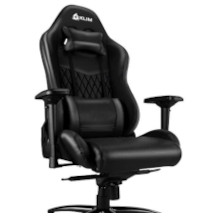
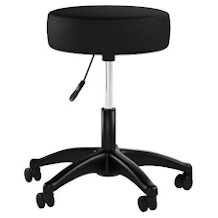
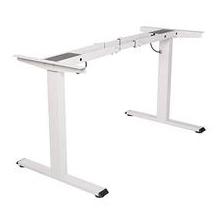
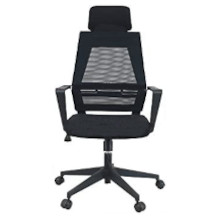
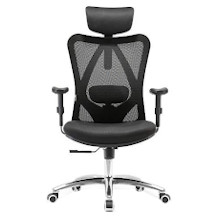
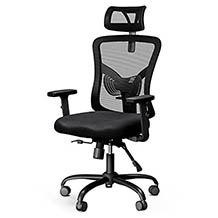
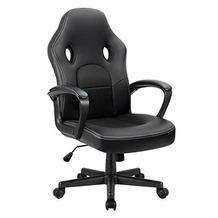
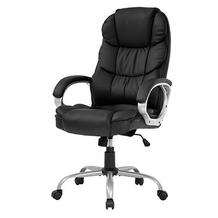
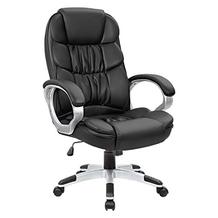
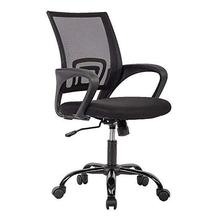
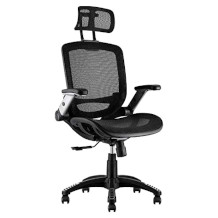

 12,665 reviews
12,665 reviews
